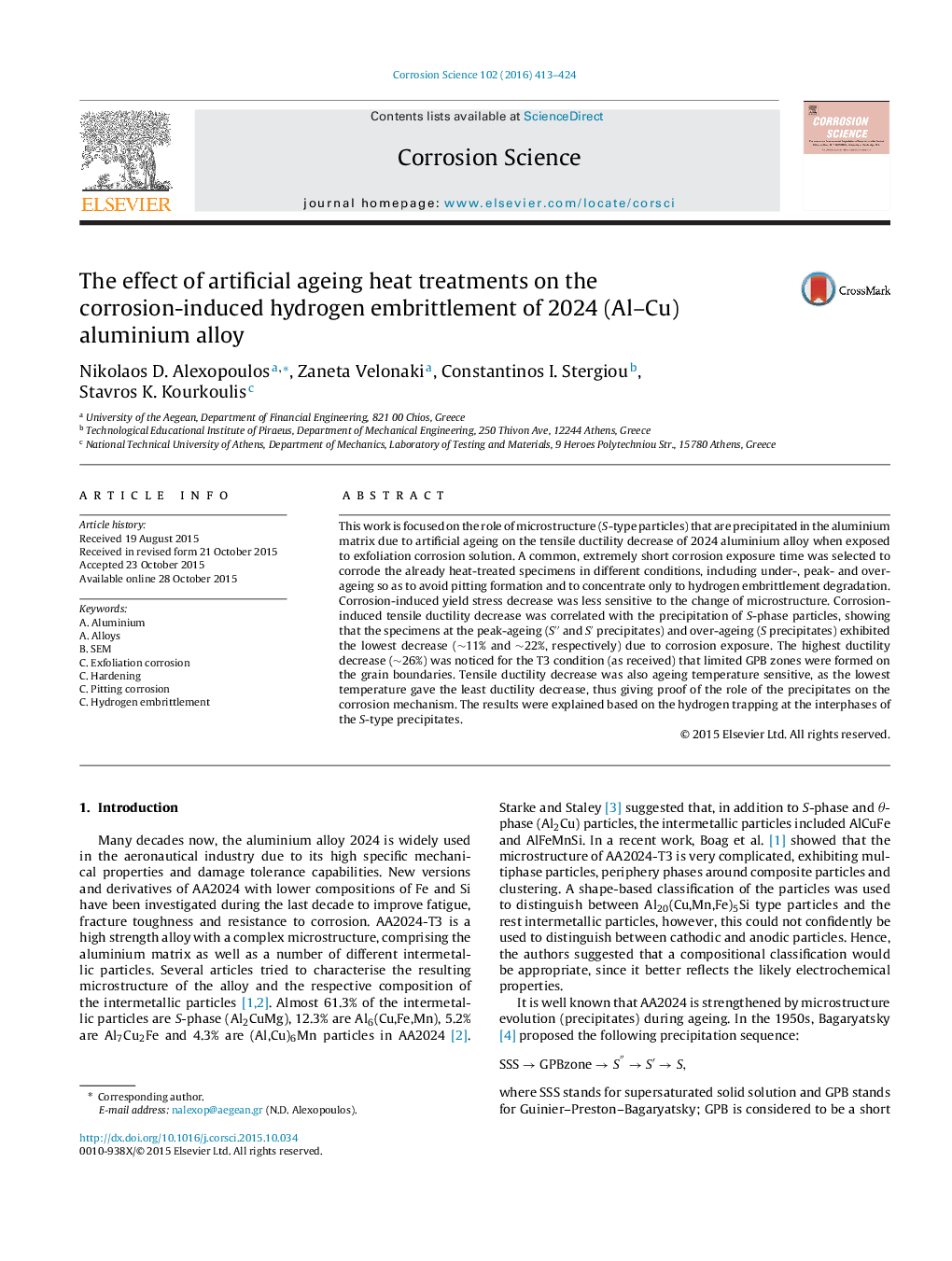| Article ID | Journal | Published Year | Pages | File Type |
|---|---|---|---|---|
| 1468454 | Corrosion Science | 2016 | 12 Pages |
•Corrosion-induced tensile ductility decrease was absolutely dependant on the formation of S-phase precipitates.•Specimens at the peak-ageing (with formed S″ and S′ precipitates) exhibited the lowest ductility decrease due to corrosion exposure.•Such ductility decrease was ageing temperature sensitive, thus giving proof of the growth kinetics of the precipitates on the corrosion mechanism.•Hydrogen embrittlement and size/number of the S-type precipitates were correlated by means of hydrogen capacity traps.
This work is focused on the role of microstructure (S-type particles) that are precipitated in the aluminium matrix due to artificial ageing on the tensile ductility decrease of 2024 aluminium alloy when exposed to exfoliation corrosion solution. A common, extremely short corrosion exposure time was selected to corrode the already heat-treated specimens in different conditions, including under-, peak- and over-ageing so as to avoid pitting formation and to concentrate only to hydrogen embrittlement degradation. Corrosion-induced yield stress decrease was less sensitive to the change of microstructure. Corrosion-induced tensile ductility decrease was correlated with the precipitation of S-phase particles, showing that the specimens at the peak-ageing (S″ and S′ precipitates) and over-ageing (S precipitates) exhibited the lowest decrease (∼11% and ∼22%, respectively) due to corrosion exposure. The highest ductility decrease (∼26%) was noticed for the T3 condition (as received) that limited GPB zones were formed on the grain boundaries. Tensile ductility decrease was also ageing temperature sensitive, as the lowest temperature gave the least ductility decrease, thus giving proof of the role of the precipitates on the corrosion mechanism. The results were explained based on the hydrogen trapping at the interphases of the S-type precipitates.
